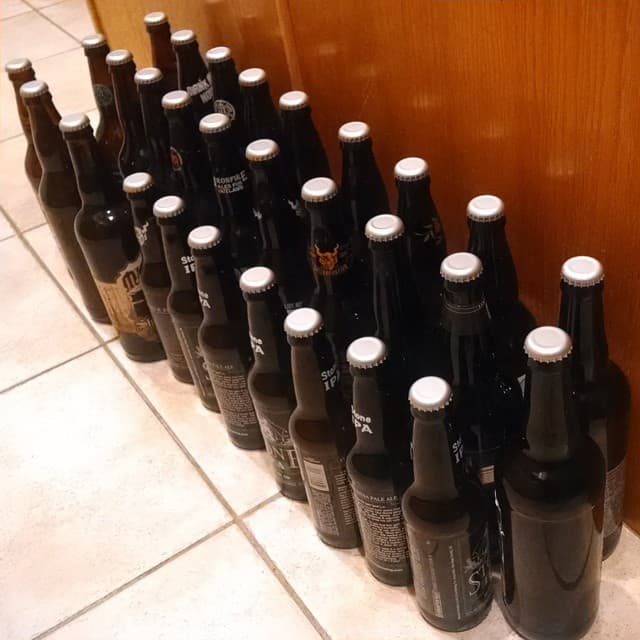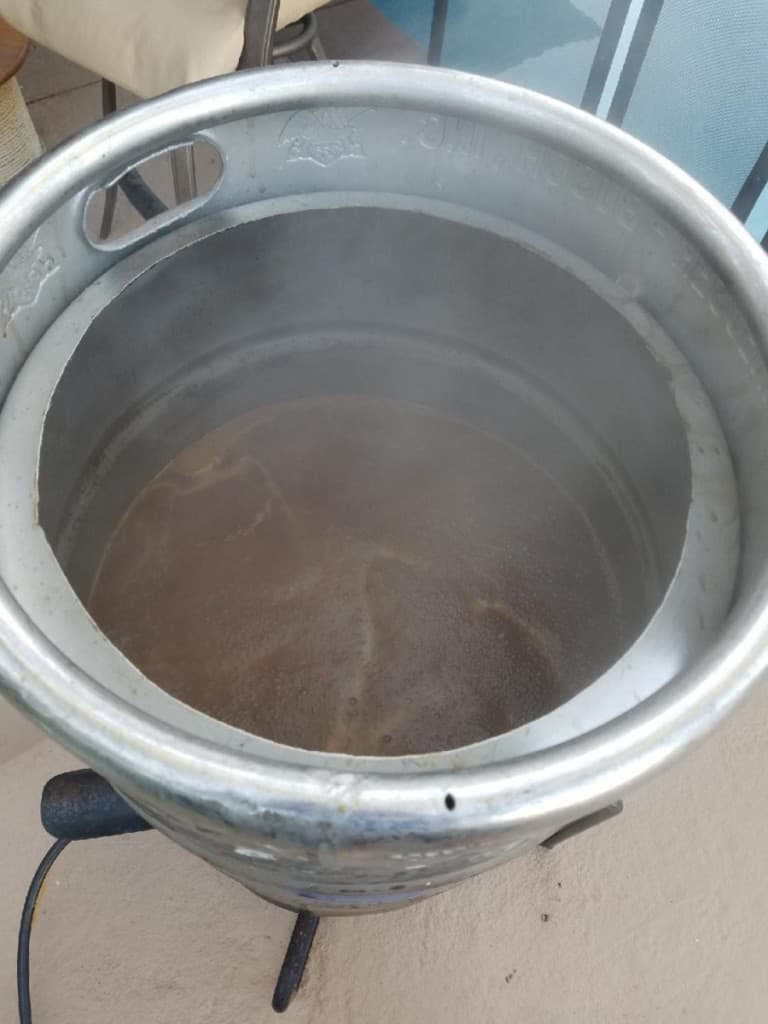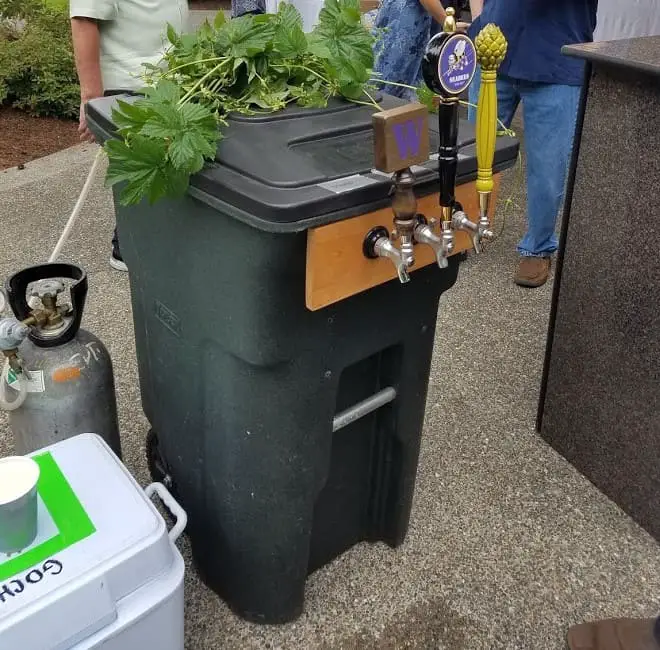Have you ever grabbed an ice cold craft beer read the label and expected a particular flavor only to find it falls short? Homebrewing with fruit can be very tricky, often you wont get the flavor you are going for. There are stages throughout the brewing process where you can add fruit, but some may be better than others.
The most common time homebrewers add fruit to beer is in secondary. Fruit can also be added to primary after fermentation is complete. Many homebrewers pasteurize their fruit by adding it to the end of a boil. Certain fruit, like pumpkin, can be added to the mash.
Each method of adding fruit to a homebrew will accomplish something different. Depending on the flavor profile you want, one method might be better than another. You don’t even have to use fresh fruit, although I do believe fruit quality affects the quality of the beer.
The Best Time to add Fruit
If you are truly looking to get that delicious fruit flavor infused into your beer, the best time to add fruit to your beer is in secondary. When you add fruit to secondary you will get much more of the sweet fruit flavor that you intend rather than a wine type flavor.
Adding fruit to secondary will likely kick start the fermenting process again, but in this stage only the fruit sugars will begin fermenting. It will add a bit more alcohol to the overall beer but not much. At this stage you can let it sit for a few weeks to settle, or more, depending on how much fruit you added.
Oftentimes, we have tried a beer after 2 or 3 weeks of secondary fermentation only to try it again months later, post bottle, and have it taste completely different. The important part is to determine at what point the flavor has settled into what it will be the majority of the time.

You Will Need to Pasteurize
If you are using fresh fruit you will need to consider how you will pasteurize it. There are many ways to do this but some better than others.
First off I would highly recommend you remove the peels from the fresh fruit since they are mainly adding bitterness. You will also want to use fruit that is overly ripe.
While you can use fresh fruit from the grocery store its not as good as your own or farmers markets as a source. These fruits often lack flavor. Instead you are better off buying higher quality organic frozen fruit. When you purchase frozen fruit its frozen at peak freshness rather than pulled off the vine early.
If fruit is coming from anywhere outside of the United States it has likely already been pasteurized, since any fruit that enters the country is automatically irradiated.
Your best bet is probably to buy frozen fruit that came from outside the United States, then you can just chuck it right in to secondary.
Ways to Pasteurize
The most common way to pasteurize your fruit is to heat it up to 170 degrees Fahrenheit on the stove. This can be done by mashing your peeled fruit or blending it first. Then you can add a small amount of water to a saucepan, add your mashed fruit and heat it.
You should probably do this ahead of brew day because the next step would be to freeze it. Freezing the pasteurized fruit will break down the cell walls and allow much more fruit flavor to leach into your beer.
Alternatively you could pasteurize with a microwave. This probably is not the best method since its unreliable. It’s the heat that kills the bacteria and yeast that we are trying to get rid off. Microwaving it will leave some spots cooler than others leading to surviving bacteria and yeast.
Microwaving while I viable method might not be the most dependable. But if you were to increase the reliance, you could retain more nutrients in the fruit than you would off the stove.
Another way many like to pasteurize their fruit is just by adding it to the end of the boil. This will lead to different flavors since you are adding fruit before fermentation begins.

Adding Fruit at the End of a Boil
This method of adding fruit is a great way to pasteurize your fruit, but not so great when you want a distinct flavor. It will also affect the color.
When you boil the fruit it will release pectin’s. These pectin’s will create a cloudy haze in your beer. Depending on the style of beer you decide to make this could be an issue. If you are going for a clean and clear lager, then it will not be conducive to that.
This may be why many fruit beers are brewed with unfiltered wheat beer styles. These styles are already cloudy so pectin won’t be an issue.
If you wan’t to make sure the pectin does not affect the clearness of your beer you could do a few things.
- Choose fruit with less pectin release, like peaches.
- Add a pectic enzyme.
Irish moss will also be necessary to counteract haze, although not related to the fruit pectin’s.
Some alternative affects of adding fruit to the boil, will be a change in flavor and fermentation. You will get a more wine type of flavor since the full fermentation is taking place with the mixture of fruit and grain sugars.
This could be good or bad depending on how you want your beer to taste. If you are going for more of a high alcohol Belgian or a barley wine, then its perfectly fine, but if you want a more crisp and refreshing fruit flavor you will likely want to add to secondary.
Fruit in the Mash
This is an interesting topic to say the least. Fruit in the mash typically is reserved for a chosen few. One of them being pumpkin.
I’ve brewed with pumpkin in the mash one time and it came out great. It was disappointing in flavor though. What it did have was an excellent aroma. I do wonder if adding extra cooked pumpkin to the secondary could have added to the flavor.
This makes me think that adding other various fruit to the mash could prove beneficial for aroma and cooked characteristics.
If peaches were added to the mash and then again to the secondary, it could add an extra layer of complexity. It may not be very frugal though, since most of the fruit characteristics are lost in the boil.
How Much Fruit to Add
This is a tough question to answer. It really depends. You will have to refine this to ultimately achieve the flavor you want.
As a general rule of thumb 2 or 3 pounds should be a good base for most fruit. Although fruit will vary on the amount that you should use. The stronger the flavor the less you will need.
Play around with it until you find the desired flavor. Look for some good recipes online that tell you the exact amount you should use, then tweak it from there.
Other Forms of Fruit
Fruit does not always have to come in the fresh or frozen variety. You could purchase already pureed fruit for brewing from cans. You may also opt for fruit flavored extract.
Puree
Fruit puree is essentially what you are doing on your own with fresh whole fruit. So buying it it puree form is taking a major shortcut. You will need to purchase specific puree in order to make sure it can be used in homebrew.
Make sure you buy fruit puree with no preservatives or anything added. It only needs to be pasteurized and carboy ready.
Extract
Extract is a way to add fruit flavor to your beer in a more concentrated form. Its pretty unnatural and doesn’t taste the same as fresh fruit does, but it will pack quite a punch.
In order to add extract to your homebrew, you will need to add it to the bucket before bottling. This is after all fermentation has been completed. Make sure you slowly add extract to taste so that you don’t overpower and ruin your beer.
This is likely the cheapest way to add fruit to your beer. You will get a sufficient fruit taste from just a few drops. A typical bottle is less than 10 dollars.
While extract may be the cheapest to purchase overall, nothing can beat the cost of growing your own. The only cost to you from growing your own fruit is the opportunity cost of just selling it.
The Hazy IPA Craze, Juice and Hops
Hazy IPA’s also known as NEIPA are the east coast response to west coast IPA. This style of IPA is characterized by its haze, but also its juiciness. This is the first style of fruit beer where hops are heavily incorporated alongside fruit flavor.
Actual fruit in this style of beer is actually minimal. You would add fruit to this style of beer just like any other, by adding it to secondary. What is really interesting is how fruit flavors are truly achieved from this style.

You will need to choose fruit flavor producing yeast strains alongside hops with a fruit aroma and flavor. Its important to align your hop and fruit real fruit flavor so that you don’t get a jumbled mess of flavor fighting for dominance.
In order to get that juicy taste you will need to make sure you add your hops at the end of the boil. This will keep the hops from bittering and leave you will less bitter hop taste and more juicy aromatic hop flavor. Dry hopping can be done alongside adding the fruit to primary or secondary.
Fruit Lambics
Fruit lambics fall into two distinct groups. They are either tart and sweet, or sour and funky. Lambics have begun popping up but more as a sour beer in the craft beer scene.
Traditionally lambic beers are hopped with aged hops and fruit is added and left to ferment for upwards of two years! That’s a long time, so how are sour beers brewed in the new local craft breweries?
Typically local breweries increase the speed at which their beer sours by adding bacteria, directly to the kettle. Otherwise the only other way to get your beer to sour is by adding whole fruit. The whole fruit will have bacteria on it that will cause it to sour.
Beer soured by fruit will taste terrible when you drink it within a few month’s. It really needs a long time to age and mellow. The only way to do that is with lots of time. So the next time you think your beer is ruined from fruit, think again before pouring it out. Give it some time to age.
Finding Cheap Fruit
Fruit can be an expensive part of your overall recipe cost. The cheapest way to add a lot of fruit flavor to your beer is probably to utilize yeast. Many yeast profiles have a berry flavor to them.
If you are looking to enhance your raspberry or blueberry beer its important to use the right yeast so that you don’t have to dump obscenely expensive amounts of fruit into your beer.
You might even be able to stroll over to the fruits that are on sale at your local grocery store, since the more ripe and aged the fruit you are using is, the better it will be for making beer.
Buy in Season
Its best to use fruit that is in season with your beer. This will avoid heavy costs of out of season fruit. You don’t wan’t fruit flown in from the southern hemisphere just so you can have a beer you need to wait a few month’s to enjoy anyways.
Plan out the fruit beers that you want to make throughout the year take a look at this table for some ideas.
| Spring | Summer | Fall | Winter |
| Apples | Blackberries | Pumpkin | Apples |
| Bananas | Blueberries | Ginger | Avocadoes |
| Lemons | Mangos | Pears | Limes |
| Limes | Cherries | Pineapples | Lemons |
| Pineapples | Plums | Kiwifruit | Oranges |
| Strawberries | Peaches | Grapes | Grapefruit |
This is by no means an exhaustive list but it gives you an idea of some of the overlaps and when you can’t really get a specific fruit. If you plan well you can even have a bottle of each kind of beer ready at all times of the year, for any occasion.
Buy Puree Online
You don’t have to go the route of using fresh fruit every-time, although I highly recommend it and it makes all the difference. You could instead opt to get canned puree. This stuff is a lot more expensive than fresh fruit so its important to find the cheapest place to buy it.
You will likely find it cheaper by shopping online, but you might be able to find it from your local homebrew shop on sale. Many homebrew shops have been getting terrible business and end up closing regularly. If you find one is closing, go by and stock up.
But for all those other times cross check between different websites and look at the available prices. Vintners Harvest is typically a good brand but their prices per fruit do vary.

